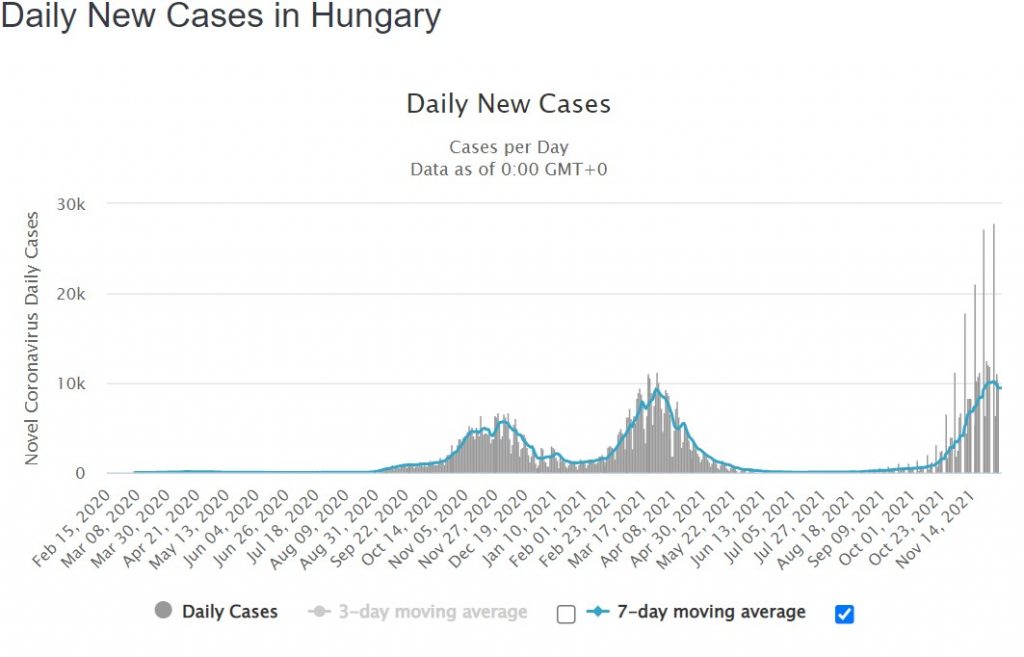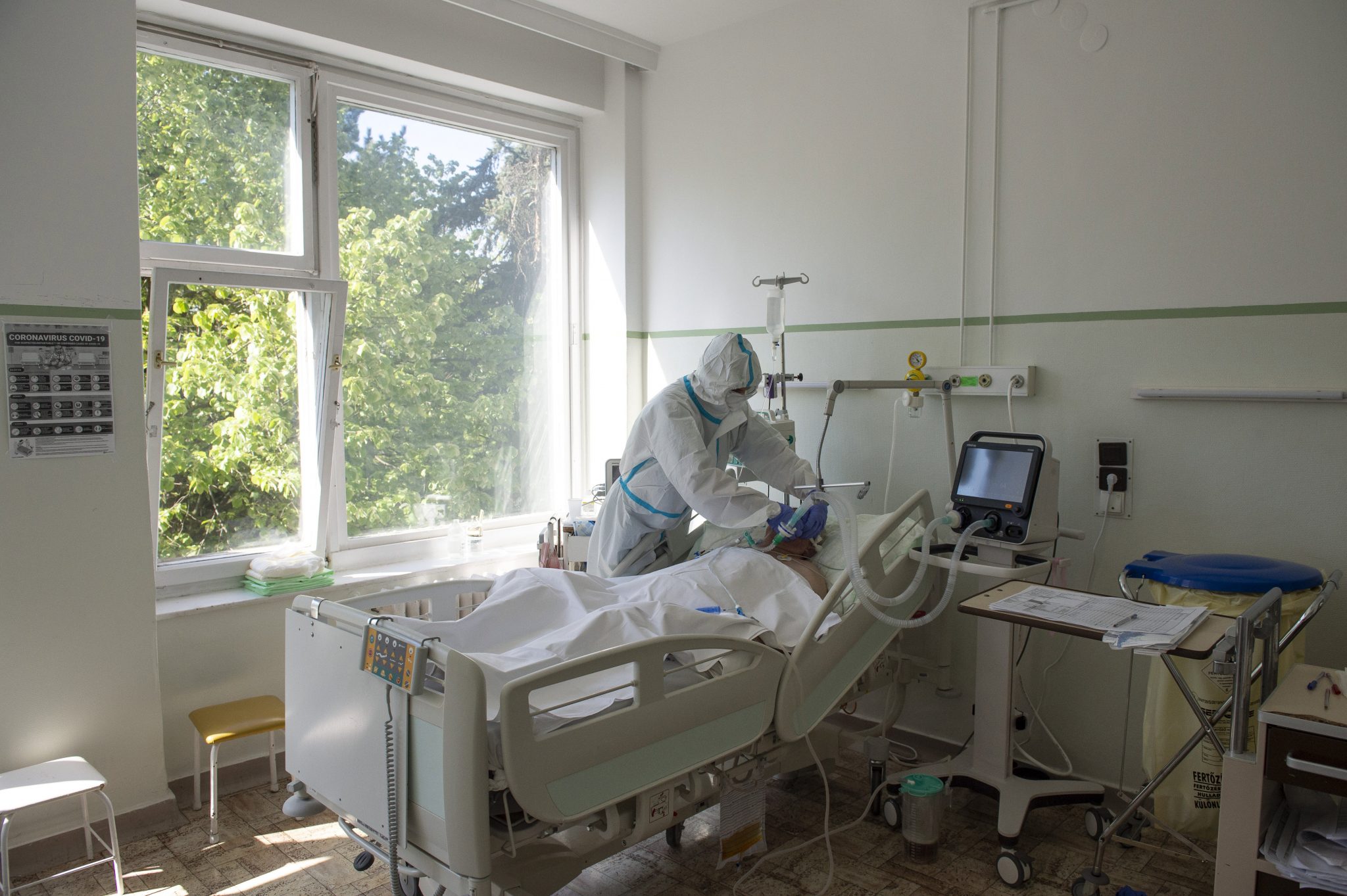The epidemiological statistics of Hungary continue to sharply deteriorate. In November, the negative shift was so great that the country has once again become the EU and world leader in fatalities in proportion to the population. In addition, the number of new cases has also reached a new all-time high.
Surging number of cases, hospitalizations
The number of newly registered cases remains an important indicator of how fast the virus is spreading in Hungary and how the epidemic situation is likely to be evolving in the coming weeks.
It is therefore less than reassuring that the rate of daily new infections has been on a steady rise in November as well. So much so that last month’s relevant figures proved to be the highest since the epidemic started in Hungary.
Unfortunately, tracking the daily infection figures was made extremely difficult when authorities a few months ago decided to simply stop publishing data on the epidemic on the weekends, and only report the Friday, Saturday, Sunday figures to the public all at once on Monday. Given the inconsistent release of data, it is therefore, better to look at the seven-day moving average, which gives a closer indication of the actual trends.
At the beginning of last month, the seven-day average of new daily cases stood at 3,445; by the end of November, however, this figure showed an almost threefold increase (10,128).

Image via worldometers.info
The jump was so severe that the 22nd of November was the first day during the fourth covid wave when the seven-day average of new infections exceeded the number reported at the peak of the third wave (9,253), reaching the highest level since the beginning of the epidemic.
Furthermore, the daily number of new cases was at an all-time high just a few days earlier, with 11,289 new cases recorded on November 19, marginally higher than the previous peak of 11,265 reported on March 26.
Additionally, despite the warning signs from experts, the number of positive tests conducted remains way above WHO’s recommendation of 5%, currently hovering well above even the upper limit at an average of 27%.
In line with the number of newly infected people, the number of hospitalized patients also continued to rise rapidly, up from 2,605 admissions at the beginning of November to 7,596 by the last day of the month, which is a startling threefold increase.
Surprisingly enough, the number of patients on ventilators showed a marked improvement in the last week of November. Even though more than twice as many people needed respiratory assistance on November 26 (695) compared to the first day of November (299), the following day we could see a sharp drop: the number of people on ventilators fell to 538. This represents a decrease of more than 20% between the two daily reports, which is virtually impossible given the current situation.
As press reports quickly revealed, the anomaly was due to a centralized change in hospital data reporting and only those who are ventilated invasively (intubated, with a tube inserted into the windpipe) can now be marked as “ventilated patients.” This data therefore no longer includes patients who need to be assisted non-invasively (e.g. oxygen mask or other means, but by machine).
This change essentially renders the relevant existing data set useless and means that from now on we’ll know a lot less about the actual burden on Hungarian ICUs.
Hungary’s death rate once again worst on the globe
Unfortunately, in the previous month, Hungary has become the country with the worst death rate in proportion to the population in the EU according to Oxford Univerity’s data aggregator, Our World in Data.
More regrettably, just as during the third wave in March, on November 30, Hungary once again became the country with the worst death rate in the whole world, according to private data aggregator Worldometer.
It is of course important to note that due to the different statistical methods used in various countries, it is not always possible to make exact comparisons between the mortality figures of different countries. However, on the basis of several independent statistics, it is unquestionable that in terms of covid mortality, Hungary is in the worst one-third of European countries. (In 2020, coronavirus became the third most common cause of death in Hungary, alongside cancer and diseases of the circulatory system).
Perhaps the only positive point is that the seven-day moving average of death rates remained below the record level registered during the third wave, although it is somewhat above the figures observed in November last year.
Mixed vaccination stats
In terms of the vaccination rate, the situation in Hungary is mixed. On the one hand, as the country’s vaccination drive hit a wall, the country has failed to maintain its leading position in the EU with the highest rates of a fully vaccinated population. In fact, it has now fallen back to the bottom third with a 61% vaccination rate. According to the latest statistics published by the ECDC, Hungary ranks 19th in terms of full vaccination among the bloc’s countries.
On the other hand, Hungary has administered booster shots to a greater share of its population than any other European Union country. Fully 26.19 percent of Hungary’s population has received a booster shot compared with the EU average of 10.5 percent.
Featured photo illustration by Attila Balázs/MTI




